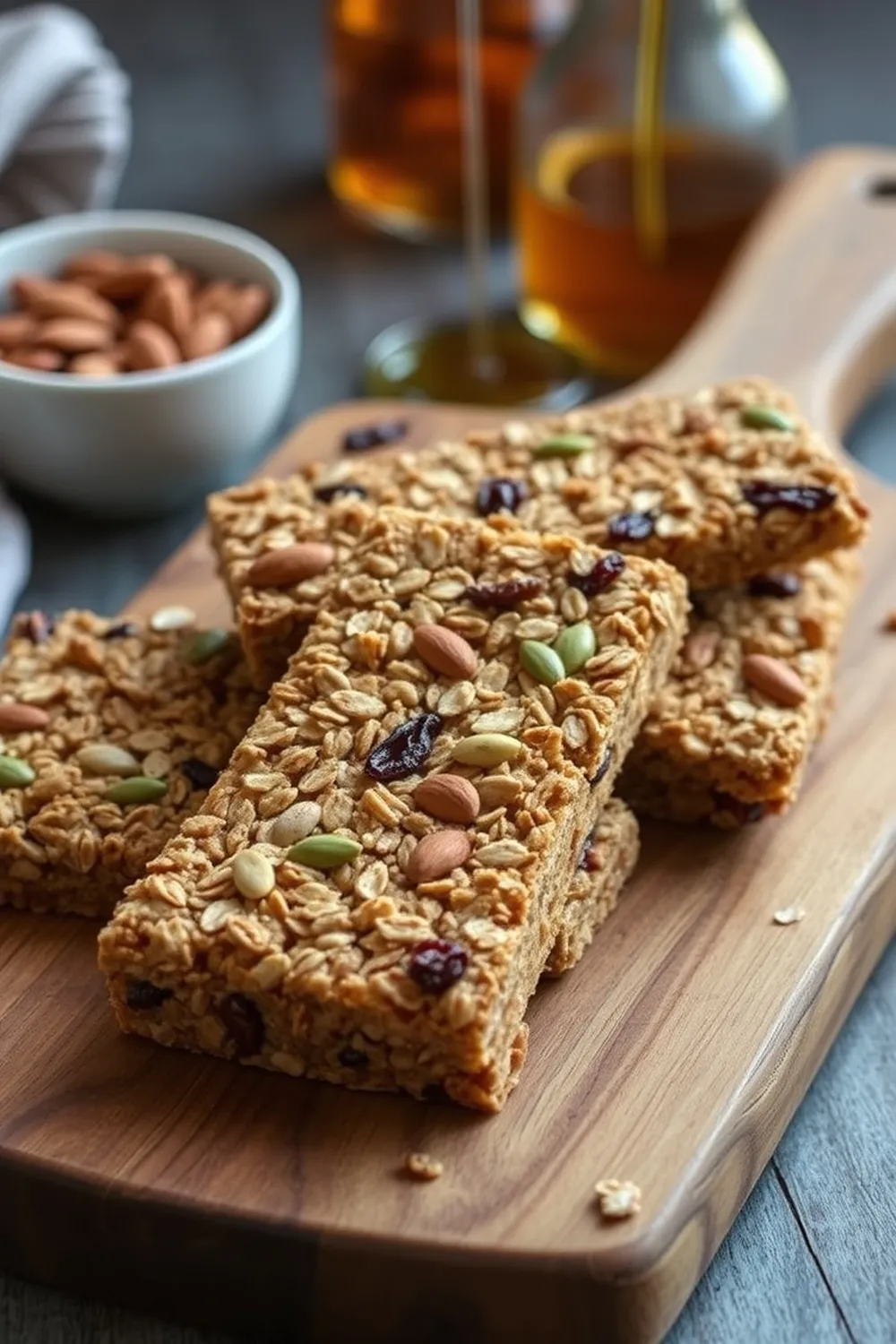- Combine ragi flour, grated carrot, chopped onion, green chilies, coriander, sesame seeds, turmeric powder, and salt in a bowl.
- Gradually add hot water to form a soft dough. Divide into equal portions and let it rest for 5-8 minutes.
- Grease parchment paper with oil. Flatten a dough ball into a circular shape using your fingers, creating 3-4 holes.
- Heat a griddle. Transfer the rotti (with parchment) onto it. Carefully remove the parchment paper.
- Drizzle oil into the holes and around the edges. Cover and cook for 2-3 minutes.
- Flip, add more oil, and cook until crispy and golden brown. Repeat with the remaining dough.
- Calories:120 kcal25%
- Energy:502 kJ22%
- Protein:4 g28%
- Carbohydrates:20 mg40%
- Sugar:2 mg8%
- Salt:50 g25%
- Fat:3 g20%
Last Updated on 4 months by Neha Deshmukh
Sprouted Ragi Roti Recipe – Easy Carrot & Sesame Flatbread
Hey everyone! I’m so excited to share this recipe with you – Sprouted Ragi Roti with a delightful hint of carrot and sesame. It’s a family favorite, and honestly, it’s become my go-to when I want something healthy, flavorful, and a little bit different from the usual roti. These aren’t your everyday flatbreads; they’re packed with goodness and surprisingly easy to make. Let’s get cooking!
Why You’ll Love This Recipe
These sprouted ragi rotis are a fantastic way to sneak in some extra nutrition. They’re naturally gluten-free (if you use certified gluten-free ragi flour, of course!), and the combination of ragi, carrot, and sesame seeds is just chef’s kiss. Plus, they’re incredibly satisfying and pair beautifully with almost any Indian curry or dal. I first made these when trying to incorporate more millets into our diet, and they were an instant hit!
Ingredients
Here’s what you’ll need to whip up a batch of these delicious rotis:
- 2 cups Sprouted Ragi Flour
- 1 large Onion
- 1 medium Carrot (grated)
- 0.5 teaspoon Turmeric Powder
- 3-4 Green Chillies
- 2 teaspoons Sesame Seeds
- 0.75 cup Hot Water (approximately 180ml)
- Finely chopped coriander leaves
- Salt to taste
- Oil as required
Ingredient Notes
Let’s talk ingredients! A few little tips can make all the difference.
- Sprouted Ragi Flour: We’ll dive deeper into this in a bit, but using sprouted ragi flour really elevates the flavor and nutritional value.
- Onion: I prefer using a red onion for a bit of extra bite, but any onion will work.
- Carrot: Grating the carrot finely ensures it cooks through and blends well with the dough.
- Green Chillies: Adjust the number of green chillies based on your spice preference. I usually go with 3-4, but sometimes my family likes it milder!
- Sesame Seeds: These add a lovely nutty flavor and a bit of crunch. Don’t skip them!
Sprouted Ragi Flour: Health Benefits & Where to Find It
Sprouted ragi flour is a powerhouse of nutrients! Sprouting increases the bioavailability of vitamins and minerals, making it easier for your body to absorb them. It’s rich in calcium, iron, and fiber – perfect for a healthy diet. You can usually find it at health food stores, online retailers, or even some well-stocked supermarkets. If you can’t find sprouted ragi flour, you can use regular ragi flour, but the texture and flavor will be slightly different (we’ll talk more about that in the FAQs).
Carrot Selection: Choosing the Best for Flavor
When it comes to carrots, look for firm, bright orange carrots. The sweeter the carrot, the better it will taste in the roti. I find that locally grown carrots often have the best flavor.
The Role of Sesame Seeds in Indian Cooking
Sesame seeds aren’t just tasty; they’re deeply rooted in Indian culinary traditions. They’re believed to have warming properties and are often used in winter dishes. Plus, they add a beautiful texture and nutty flavor to everything they touch!
Turmeric Powder: Varieties & Potency
Turmeric powder, or haldi, is a staple in Indian kitchens. The potency can vary depending on the quality and origin. Look for a vibrant orange-yellow color – that usually indicates good quality.
Regional Variations in Roti Making
Roti making is an art form, and it varies greatly across India! Some regions prefer thicker rotis, while others like them paper-thin. Some add different vegetables or spices. This recipe is a fairly standard base, but feel free to experiment and make it your own.
Step-By-Step Instructions
Alright, let’s get down to business! Here’s how to make these amazing sprouted ragi rotis:
- In a large bowl, combine the sprouted ragi flour, grated carrot, chopped onion, green chillies, coriander leaves, sesame seeds, turmeric powder, and salt.
- Gradually add the hot water, mixing with your hands until a soft dough forms. Don’t add all the water at once – you might not need it all!
- Knead the dough gently for a couple of minutes. It should be soft and pliable.
- Divide the dough into equal portions (about 5-6 rotis). Rest for 5-8 minutes. This allows the dough to relax and makes it easier to roll.
- Grease a piece of parchment paper with a little oil. Take one dough ball and flatten it into a circular shape using your fingers, creating 3-4 small holes in the center.
- Heat a griddle or tawa over medium heat. Carefully transfer the roti (with the parchment paper) onto the hot griddle.
- Cook for 2-3 minutes, then carefully remove the parchment paper.
- Drizzle a little oil into the holes and around the edges of the roti. Cover and cook for another 2-3 minutes.
- Flip the roti, add more oil, and cook until it’s crispy and golden brown.
- Repeat with the remaining dough.
Expert Tips
Here are a few things I’ve learned along the way to help you make the perfect ragi roti:
- Achieving the Perfect Roti Texture: The key is to not overwork the dough. A gentle hand is best.
- Working with Sprouted Ragi Flour Dough: Sprouted ragi flour dough can be a little crumbly. Adding hot water helps bind it together.
- Preventing Roti from Sticking to the Griddle: Make sure your griddle is hot enough and well-greased. A little oil goes a long way!
Variations
Want to switch things up? Here are a few ideas:
- Vegan Ragi Roti: This recipe is naturally vegan!
- Gluten-Free Adaptations: Ensure your ragi flour is certified gluten-free if you have a gluten intolerance.
- Spice Level Adjustments (Mild to Spicy): Reduce or omit the green chillies for a milder flavor. You can also add a pinch of red chilli powder for extra heat.
- Festival Adaptations (Makar Sankranti/Lohri): Add a little bit of jaggery (gur) to the dough for a festive touch.
Serving Suggestions
These rotis are incredibly versatile. They’re delicious with:
- Dal Makhani
- Paneer Butter Masala
- A simple vegetable curry
- Yogurt and pickle
Storage Instructions
Leftover rotis can be stored in an airtight container at room temperature for a day or two. You can also reheat them on a griddle or in a microwave.
FAQs
Let’s answer some common questions:
What is sprouted ragi flour and why is it healthier?
Sprouted ragi flour is made from ragi grains that have been allowed to sprout before being ground into flour. Sprouting increases the nutrient content and makes it easier to digest.
Can I use regular ragi flour instead of sprouted ragi flour?
Yes, you can! The texture will be slightly different – a bit more coarse – and the flavor won’t be as pronounced. You might need to add a little more water to the dough.
How can I adjust the amount of green chilies for less spice?
Simply reduce the number of green chillies or remove the seeds before chopping them.
Can I make the dough ahead of time? If so, how should I store it?
Yes, you can! Wrap the dough tightly in plastic wrap and store it in the refrigerator for up to 24 hours.
What is the best way to cook these rotis if I don’t have a griddle?
You can use a flat, heavy-bottomed pan. Just make sure it’s well-greased.










